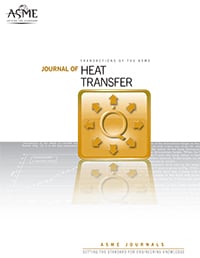
A research paper by Sunil Mehendale (MMET), has been accepted for publication in the American Society of Mechanical Engineers (ASME) Journal of Heat Transfer (JHT), a top-notch journal that disseminates information of permanent interest in the areas of heat and mass transfer.
The journal is reputed for its rigorous peer review process and there is a general consensus that the JHT is the world’s premier journal in its field. The paper, “Thermal-Hydraulic Optimization of Open Cell Metallic Foams Used as Extended Surfaces,” has been posted online and is available in the Accepted Manuscript section of the journal on the ASME Digital Collection.
Article Summary
Heat transfer and fluid flow in metal foams is encountered in a broad range of natural and industrial processes which includes such diverse fields as compact heat exchangers, fuel cell technology, filtration, and physiological processes. An analytical validated model for predicting temperature distribution, heat transfer, pressure drop, and fluid pumping power in an open-cell metal foam fin is developed. A foam length optimization technique based on its performance factor (PF) is proposed. An often-used fin optimization criterion recommends that the fin effectiveness should equal or exceed 2. The present study shows that the effectiveness of any optimized foam always exceeds 2. However, the converse, i.e., requiring the foam effectiveness to at least equal 2, does not guarantee an optimal foam, which implies that the PF-based optimization criterion is an inclusive one. It is also proved that a previously suggested optimization criterion of maximizing a foam’s geometric mean efficiency will result in a sub-optimal foam design.
